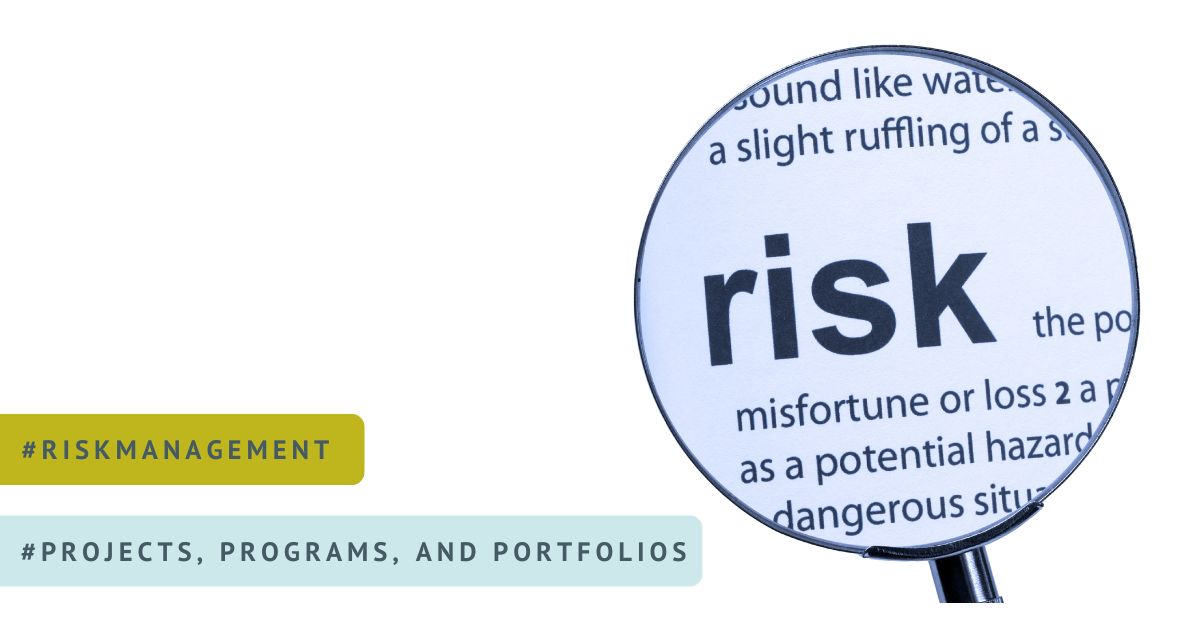
RISK MANAGEMENT IN PROJECTS, PROGRAMS, AND PORTFOLIOS
Risk management is an integral part of successful project, program, and portfolio management. PMI standards such as the PMBOK® Guide (7th Edition), the Standard for Program Management (5th Edition), and the Standard for Portfolio Management (4th Edition) provide a consistent framework and practical guidance on how to deal with uncertainty in various organizational contexts.
PART I: PROJECT RISK MANAGEMENT
- Definition and Importance
A project risk is an uncertain event or condition that, if it occurs, can have a positive or negative effect on one or more project objectives. Objectives can include scope, schedule, cost, and quality.
Effective risk management helps: – Prevent costly issues, – Leverage emerging opportunities, – Improve predictability and control, – Increase stakeholder engagement. - PMI Risk Management Process
Project risk management includes the following key processes: 1. Plan Risk Management, 2. Identify Risks, 3. Perform Qualitative Risk Analysis, 4. Perform Quantitative Risk Analysis (optional), 5. Plan Risk Responses, 6. Implement Risk Responses, 7. Monitor Risks.
These steps provide a structured approach that ensures risks are handled proactively and not reactively. - How to Describe Risk Properly: Cause – Risk – Effect
A best practice recommended by PMI and AgilePMO is to describe each risk using the structure: Cause – Risk – Effect.
Example: – Because the project is using new technology (cause), there is a risk we may underestimate the timeline (risk), which could lead to delays in project delivery (effect).
This method improves clarity and facilitates better analysis and response planning. - Tools and Techniques
- Brainstorming and Workshops
- SWOT Analysis (Strengths, Weaknesses, Opportunities, Threats)
- Assumption and Constraints Analysis
- Risk Breakdown Structure (RBS)
- Ishikawa (Fishbone) Diagrams
- Risk Probability and Impact Matrix
- Monte Carlo Simulation for quantitative assessments
- Risk Register
The risk register should include:- Risk ID and description,
- Risk category (technical, external, organizational, etc.),
- Probability and impact rating,
- Risk owner,
- Proposed mitigation or exploitation strategies,
- Residual and secondary risks,
- Monitoring status.
PART II: PROGRAM RISK MANAGEMENT
- Characteristics of Program Risks
Program risks differ from project risks in scope and complexity. They:- Affect multiple related projects,
- Impact program benefits realization,
- Often stem from interdependencies and organizational issues,
- Require coordination across stakeholders.
- Key Practices for Programs
- Maintain a consolidated Program Risk Register,
- Use RACI matrices to clarify roles in risk responses,
- Set up Risk Governance Boards for escalated risks,
- Perform periodic risk audits across projects.
- Example of Program-Level Risk
Because one project is delayed in delivering a core module (cause), the integration phase across all projects may be postponed (risk), potentially jeopardizing the timeline for benefit realization (effect). - Role of the Program Manager
The Program Manager must:- Integrate risk information from individual projects,
- Monitor cross-cutting risks and dependencies,
- Ensure risks are aligned with strategic priorities,
- Escalate critical risks to portfolio level when necessary.
PART III: PORTFOLIO RISK MANAGEMENT
- Strategic Nature of Portfolio Risks
Portfolio risks threaten the achievement of organizational strategic objectives. These include:- Poor alignment with strategy,
- Resource overcommitment,
- Financial exposure to certain sectors or initiatives,
- Regulatory or reputational impacts.
- Portfolio Risk Activities
- Define organizational risk appetite and capacity,
- Establish thresholds and scoring criteria for selecting initiatives,
- Conduct scenario planning and stress testing,
- Use KPIs to monitor exposure.
- Portfolio Tools
- Portfolio-level Risk Register and Dashboards,
- Heatmaps to visualize concentrations,
- Decision trees and EMV (Expected Monetary Value) analysis,
- What-if analysis for strategic decisions.
- Portfolio Example
Because 70% of portfolio projects are IT-focused (cause), the organization is vulnerable to tech market volatility (risk), which may lead to sudden budget constraints and deprioritization (effect).
PART IV: RISK RESPONSE STRATEGIES
- Strategies for Negative Risks (Threats)
- Avoid: Eliminate the cause or withdraw from the activity.
- Mitigate: Reduce probability or impact.
- Transfer: Shift risk to third party (e.g., insurance, contracts).
- Accept: Acknowledge and monitor the risk.
- Escalate: Hand over to program/portfolio if out of project scope.
- Strategies for Positive Risks (Opportunities)
- Exploit: Ensure the opportunity occurs.
- Enhance: Increase likelihood or benefit.
- Share: Partner with another entity.
- Accept: Monitor passively.
- Escalate: Move to appropriate governance level.
CONCLUSION
Risk management is a vital enabler of success across all levels of change initiatives. Using PMI’s structured approach and practical tools, professionals can:
- Improve decision-making,
- Increase resilience,
- Strengthen collaboration,
- Protect and maximize value delivery.
Clarity in describing risks, understanding risk appetite and tolerance, and embedding a culture of continuous risk monitoring are critical success factors.
Risk management is not just about minimizing threats—it’s about enabling success by preparing for the uncertain and embracing the positive potential of change.
Get ready for CAPM® certification
If you are a beginner project manager or want to upgrade your skills join our upcoming PMI® Authorized Certified Associate in Project Management (CAPM)® Exam Prep Course.
Prepare for PMP® certification.
If you already have more project management experience sign up for our upcoming PMI® Authorized PMP® Exam Prep Course and receive the Agile in Practice workshop for free.

Sign up for our newsletter. Each week you will receive a letter from us with articles worth reading, tools for working with teams, tips and interesting facts about project management.


